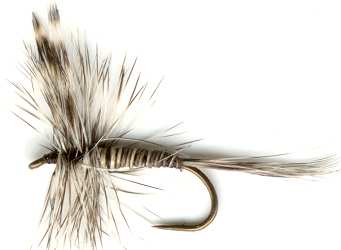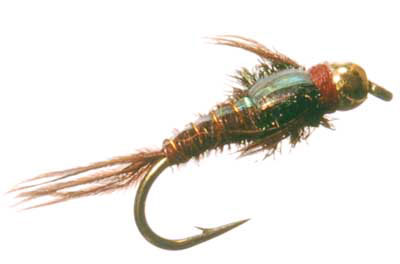Top ten dry flies for Colorado
1. Parachute Adams
Easy first. Most versitile dry fly on the market. The parachute Adam floats low in the water and is very visible. When fished in sizes 10-12, it can represent large mayflies and even hoppers. In sizes 14-16, this fly looks like a BWO or a regular mayfly. Sizes 18-24 represents small mayflies and midges. In the spring, this fly fishes best in size 16. It represents the spring BWO hatches. Then, during the summer, the most effective size is 14. This represents your everyday summer mayfly hatches. In the winter, use a size 18-24 to represent small midges. If trout are rising, this pattern can catch them.
2. Black bodied Elk Hair Caddis.
The elk hiar caddis has been catching fish year after year. This dry fly is best in black because it is more versatile. The elk hair caddis sits high on the water and is easy to see. Fish love this pattern during the spring caddis hatches. This fly is best fished in sizes 14-16; however, the Elk hair caddis can be fished effectively in both smaller and larger sizes to suit the current hatches.
3. Brooks sprout midge/baetis
In Colorado, midge hatches happen year round. The brooks sprout midge is a perfect midge emerger dry fly to suit all midge and small BWO hatches. In the middle of the winter, this is your best bet to get fish to rise. Fish the olive in sizes 18-22 to represent small baetis emergers. In black, fish this in sizes 18-24 to represent midge hatches.
4. PMX
When larger insects are in the air, this is a go to fly in Colorado. The great thing about the PMX is that it represents all the large insects near water, such as a hopper, stonefly, October caddis, and hex mayflies. The PMX can be fished in an assortment of colors, but the most effective are black, olive, and peacock herl with a red belly. This fly floats very well because of its elk hair wings and parachute. The parachute also makes this fly visible in the water. Usually, you can fish 2 heavy nymphs under this fly with no problems. This fly is best fished in sizes 10-14 during the summer.
5. Mosquito fly
The mosquito fly is incredibly versatile. This flies is great in small streams, ponds, high alpine fishing, and lakes. While it does represent a mosquito, this fly accurately represents hatching BWOs and other mayflies. This fly is best fished alone or with another dry fly in sizes 18-20. Even when this fly sinks, it still gets strikes.









